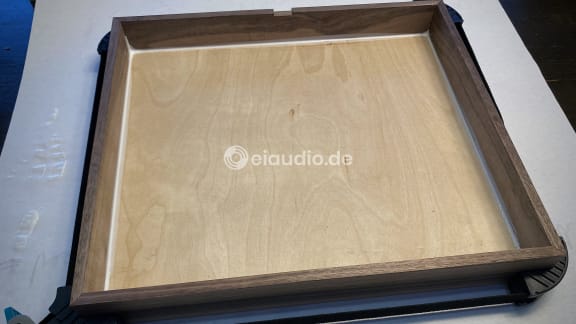Constructing a Plinth (Dual CS 721)
Published: 19/07/2022
Author: Karsten Hein
Category: Explorations
Tag(s): Turntables
Dual turntables were arguably among the best Hi-Fi devices ever made. One reason for this may have been Dual's early start in the technology, their background in precision instruments, their rootedness in steadfast Black Forest traditions, and perhaps also their geographical proximity to the fabled EMT broadcast equipment manufacturer in the Black Forest town of Lahr, about one hour’s drive from Dual’s home in St. Georgen. Dual would have been among the choices available to Elektromesstechnik engineers looking for new opportunities, and vice versa, in doing so they were cross-pollinating and adding to the expertise of both companies.
Dual’s CS 721 turntable was sold during the late 1970s and offered state-of-the-art music reproduction in combination with its standard, and by now legendary, Shure V15-III phono cartridge. The turntable offered a myriad of settings for the Hi-Fi enthusiast which made it very attractive, but basic models were somewhat reduced in terms of chassis costs, as Dual was already faced with increased price competition from Asia. For our model of the CS 721 this meant that a solid wood plinth had already given way to laminated surfaces and plastic. This was especially true for the plinth, which was arguably the weakest point of this player.
Since all the Dual’s other components were of exceptional quality, versatility, and musicality, I looked around for available plinth upgrades. However, the models I found were either not very pretty or very expensive. I was looking for a solution that would enhance the acoustics and be an understatement at the same time. And, ideally, I would be able to use all original parts in case someone wanted to build it back later. So, I decided to construct a plinth around the plastic base and to silence any vibrations with evenly spread rubber foam cushions. I would then choose feet for decoupling that combined ultra-strong support with excellent acoustic insulation. In combinaton, these enhancements should raise the Dual to the next level. At least this was my hope.
I bought solid strips of high-quality American walnut to form a frame that I cut to fit using a miter saw. My friend Thomas was available to support me in this, because getting the trim perfect proved to be a lengthy and difficult process given the semi-professional equipment we had available to us. We glued the pieces to a base board and cut a three cm notch into the back board to hold the cables. I then applied a foam rubber band along the outer edges and across the base board to support and quiet the original plinth construction. We used beeswax to finish the surfaces, as opposed to oil, and placed the Dual CS 721 inside. — Voila!
I must say that I am happy with the new design and love the sound. How do you feel about the look? Click on the header picture of this article to leave your comment below.
Specifications
- Type: Dual CS 721 plinth, and similar
- Base material: beech multi-plywood
- Side material: American walnut, waxed
- Dimensions: (W) 424mm; (D) 368mm; (H) 60mm
- Acoustic liner: 5x3mm foam rubber
- Feet: Audiocrast Tri-Ball Absorbers






